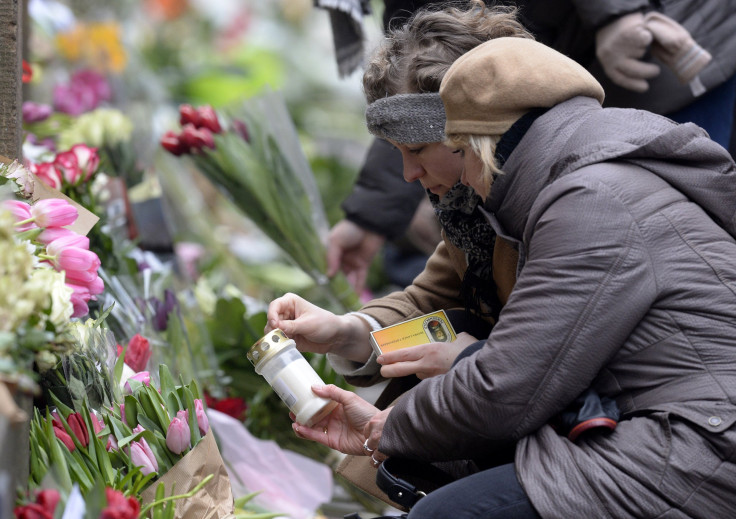Why Have Terrorist Attacks Been So Much Deadlier In Europe Than The US?

U.S. security officials are warning Americans to stay alert after a Somalia-based terrorist group warned it could target a U.S. mall in its next attack. But in general, large-scale terror attacks on U.S. soil have been rare in the post-9/11 era – particularly when compared with some of the devastating assaults Europe has seen in the past decade.
Of course, the U.S. has suffered its share of violence: Mass shootings have become all too familiar, causing a spike in the heated national debate over gun control in the wake of each new tragedy. But since 9/11, politically motivated mass attacks haven’t occurred in U.S. territory with nearly the same scale or death toll as they have in European countries.
The 2013 Boston Marathon bombing and the 2009 Fort Hood shooting were perhaps the most high-profile terror attacks in the U.S. in recent years. The Boston bombing killed four people and severely injured more than 170, while the shooting in Fort Hood, Texas, resulted in 13 deaths. Sixty-five people in total have died as a result of terrorist assaults in the U.S. since Sept. 11, 2001, according to statistics compiled by the New America Foundation, 26 of which were caused by jihadi attacks and 39 by right-wing extremist attacks.
Terrorist attacks in Europe, meanwhile, have taken on much deadlier forms over the past decade: The coordinated bomb attacks on Madrid’s commuter trains in 2004 killed 191 people; the 2005 bombings in London’s subway system killed 52 and injured more than 700; and the 2011 terrorist attack in Norway by extremist Anders Breivik resulted in 77 deaths. The Spain and Norway bombings are considered the worst terrorist attacks in those countries’ histories.
Barry Pavel, director of the Atlantic Council’s Brent Scowcroft Center on International Security, said there’s no single reason for the discrepancy between the U.S. and European Union numbers. There are several different factors at play, he said, one of them being geographical distance.
“[The U.S. is] farther from the cauldron where a lot of the extremists are being incubated and trained and otherwise preparing for being recruited to commit terrorist acts,” he said. “The fulcrum for most of the extremism we’re discussing is the Middle East, and EU is a lot closer and probably, in many ways, easier to get to than the U.S.”
Matthew Levitt, director of the Stein Program on Counterterrorism and Intelligence at the Washington Institute for Near East Policy, echoed that sentiment. “The biggest difference between us and Europe is the fact that they’re more accessible,” he said.
But he also noted that officials in the U.S. could more easily coordinate strategy on security than they could under Europe’s disparate intelligence services and security forces. “There are gaps in the seams, and one of the things that the foreign fighter phenomenon [people who travel abroad to receive training and fight alongside jihadi groups] has driven home is the need to try and fill in those gaps,” he said.
Pavel said U.S. officials placed a higher emphasis on security at the expense of civil liberties, while the reverse generally held true for European countries – a divergence that has caused tension between the U.S. and European allies in the wake of the U.S. National Security Administration leaks in 2013. That balance between privacy and national security is taking center stage in Europe once again in the aftermath of this year’s shootings in Paris and Copenhagen.
President Barack Obama, speaking in the U.K. last month in the days following the deadly attack on the Charlie Hebdo magazine headquarters in Paris, made reference to one U.S. “advantage” in preventing jihadist attacks on its home turf: “Our Muslim populations, they feel themselves to be Americans,” he said. “There is, you know, this incredible process of immigration and assimilation that is part of our tradition that is probably our greatest strength. There are parts of Europe in which that’s not the case, and that’s probably the greatest danger that Europe faces.”
Pavel agreed that the U.S., despite domestic racial tensions that have bubbled to the surface in recent years, has tended to handle integration and assimilation more smoothly than European countries. But overall, he said, there was no “one size fits all” explanation for why terrorist attacks on European soil have taken on much deadlier proportions than in the U.S. “None of these issues are sufficient by themselves, but all three of them tend to play a role,” he said.
And while U.S. and European officials are still ramping up security operations in light of new terrorist threats at home, countries in the Middle East and Africa still have the highest death tolls in the world from terrorist attacks over the past decade. According to the 2014 Global Terrorism Index, published by the Institute for Economics and Peace, 82 percent of those killed in terrorist attacks from 2000 to 2013 were from five countries: Iraq, Afghanistan, Pakistan, Nigeria and Syria.
© Copyright IBTimes 2024. All rights reserved.






















